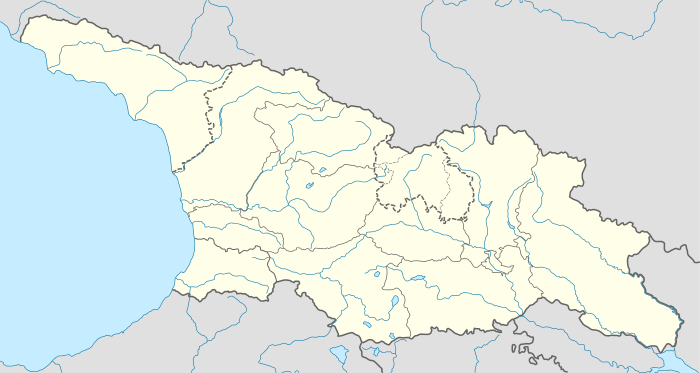Gonio
%2C_Georgia_Bebop_Drone_2015-08-26T152056%2B0000_DC30D3.jpg) Aerial view of Gonio fortress | |
 Shown within Georgia (country) | |
| Location | Adjara, Georgia |
|---|---|
| Region | Lazica |
| Coordinates | 41°34′23″N 41°34′25″E / 41.57306°N 41.57361°ECoordinates: 41°34′23″N 41°34′25″E / 41.57306°N 41.57361°E |
| Type | Settlement |
| Site notes | |
| Condition | In ruins |
Gonio fortress (Georgian: გონიოს ციხე, previously called Apsaros, or Apsaruntos), is a Roman fortification in Adjara, Georgia, on the Black Sea, 15 km south of Batumi, at the mouth of the Chorokhi river. The village sits 4 km north of the Turkish border.
The oldest reference to the fortress is by Pliny the Elder[1] in the Natural History (1st century AD). There is also a reference to the ancient name of the site in Appian’s Mithridatic Wars[2] (2nd century AD). In the 2nd century AD it was a well-fortified Roman city within Colchis. The town was also known for its theatre and hippodrome. It later came under Byzantine influence. The name "Gonio" is first attested in Michael Panaretos in the 14th century. In addition, there was a short-lived Genoese trade factory at the site. In 1547 Gonio was taken by the Ottomans, who held it until 1878, when, via the San-Stefano Treaty, Adjara became part of the Russian empire.

The grave of Saint Matthias, one of the twelve apostles, is believed to be inside the Gonio fortress. However, this is unverifiable as the Georgian government currently prohibits digging near the supposed gravesite. Other archaeological excavations are however taking place on the grounds of the fortress, focusing on Roman layers.
Gonio is currently experiencing a tourism boom. Most tourists come from Tbilisi in the summer months to enjoy beaches that are generally regarded as cleaner than Batumi's beaches (located 15 km to the north).
Notes
References
- Kakhidze, Emzar, Recent Archaeological Finds in Apsarus. Third International Congress on Black Sea Antiquities, 2005.
- Pictures of Gonio castle